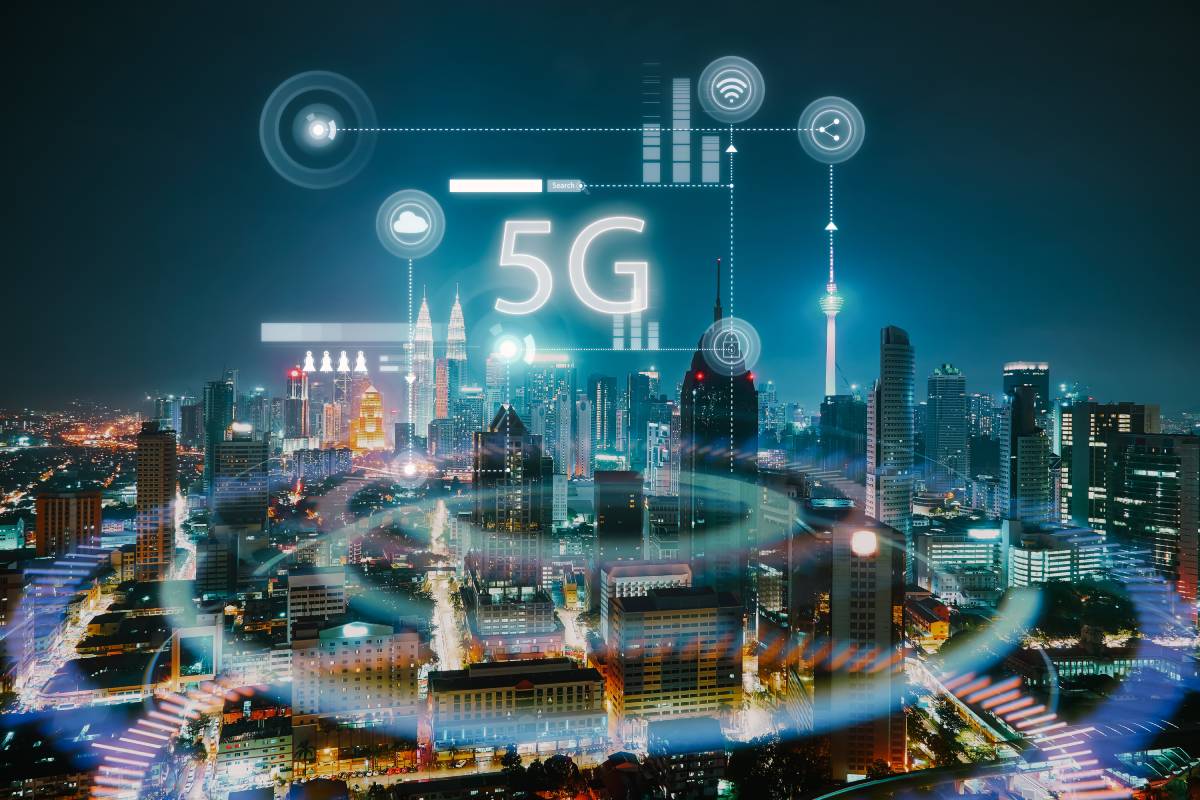The Potential Impact of 5G Networks on Healthcare

The term 5G describes the fifth generation of wireless technology. Despite the prevalence of the current 4G generation, 5G will become pervasive in the next few years, with companies like Apple already building 5G connectivity into their smartphones [1]. 5G promises download speeds up to one hundred times faster than 4G. Other benefits include higher network capacity (more devices can connect to one cell tower) as well as lower latency (data can travel faster over the network) [2]. Since new generations of wireless technology arrive roughly once every ten years, 5G networks might bring a sudden burst of innovations, including in the healthcare space.
In the short term, 5G networks can improve quality and access in telemedicine, the remote provision of medical care. One medium for telemedicine is videoconferencing, using services like Skype and Zoom to facilitate patient-provider interactions. In a meta-analysis of 35 scholarly articles about telemedicine, researchers determined that videoconferencing led to similar patient outcomes as in-person appointments. Although telemedicine did increase patient engagement and convenience, Internet connection was a noteworthy obstacle for some patients [3]. A study of 1,021 remote appointments confirmed the importance of connectivity. 3G-based and 4G-based video appointments often led to failed calls, video pixelation, and inconsistent audio/video quality, all of which undermine a provider’s work [4]. With its faster download speeds, 5G has the potential to greatly improve videoconferencing experiences among patients.
Another benefit of 5G involves medical research. A more immediate improvement is the ability to transmit big data across longer distances. Analytical techniques like machine learning and data mining depend on large datasets, which remain siloed in servers and data centers [5]. By fostering data pooling and sharing, 5G can lead to novel, data-driven treatments, methods, and innovations, all of which can improve patient outcomes. In the longer term, the higher network capacity of 5G will allow providers to remotely monitor equipment, office spaces, and even patients. A proposal from 2011 advocates for “the remote live monitoring of a patient [residing at home]” using devices ranging from wearable sensors to remote servers. Although their proposal does not specifically mention 5G, the higher network capacity of 5G will make such proposals more feasible [6]. By gathering more data, healthcare providers can facilitate future research and better understand their patients.
5G can also help alleviate the healthcare gap between rural and suburban/urban areas. In the United States, rural hospitals have been closing at an increasing rate, leaving staff without jobs and residents with reduced healthcare access. This trend shows “no signs of abating,” according to an article in The Journal of Rural Health. The same article recommends alternative care models, including urgent care facilities and nursing facilities [7]. Using 5G connectivity, customers can have better access to healthcare providers. For instance, if physicians in suburban or urban areas connect to a rural clinic remotely, conduct telemedicine appointments, receive patient data, and even perform remote surgeries, this can supplement high quality care for people in rural areas.
In conclusion, 5G networks will transform healthcare, making it easier to connect and share across greater distances. Like 4G and older generations, the adoption of 5G raises questions about network security and data privacy. However, two concerns are unique to 5G. First, 5G is being integrated with existing 4G networks, meaning it may retain existing security vulnerabilities [2]. Second, any data-sharing activities among healthcare stakeholders will draw the attention of malicious parties, some of whom might want to leak or sell sensitive data. A key consideration is ensuring that patients and providers can trust 5G.
References
[1] iPhone 12 Specs. 2020. Retrieved October 18, 2020 from https://www.apple.com/iphone-12/specs/.
[2] 5G Security and Resilience. (N.d.) Retrieved October 18, 2020 from https://www.cisa.gov/5g.
[3] Ignatowicz A., et al. Internet Videoconferencing for Patient-Clinician Consultations in Long-Term Conditions: A Review of Reviews and Applications in Line with Guidelines and Recommendations. Digital Health 2019; 5. DOI:10.1177/2055207619845831.
[4] Taylor A., et al. Home Telehealth Video Conferencing: Perceptions and Performance. JMIR mHealth and uHealth 2015; 3: 3. DOI:10.2196/mhealth.4666.
[5] Mehta N. and Pandit A. Concurrence of Big Data Analytics and Healthcare: A Systematic Review. International Journal of Medical Informatics 2018; 114. DOI:10.1016/j.ijmedinf.2018.03.013.
[6] Yuan B. and Herbert J. Web-based Real-time Remote Monitoring for Pervasive Healthcare. 2011 IEEE International Conference on Pervasive Computing and Communications Workshops. DOI:10.1109/PERCOMW.2011.5766964.
[7] Kaufman B. G., et al. The Rising Rate of Rural Hospital Closures. The Journal of Rural Health 2016; 32. DOI:10.1111/jrh.12128.
